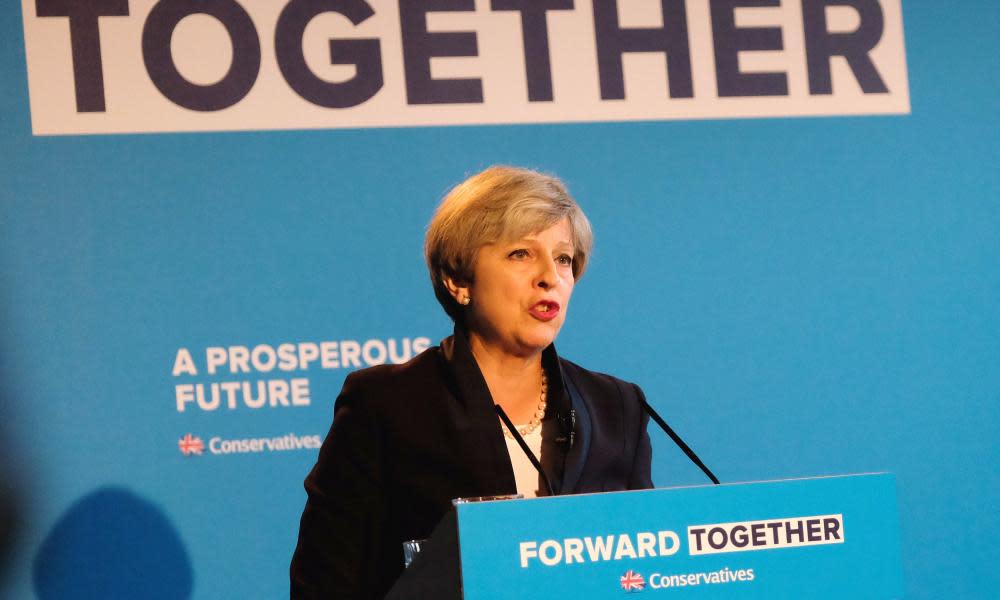Theresa May’s U-turn is a chance to rethink social care | David Brindle

Were it not so serious, the Conservatives’ remarkably ham-fisted approach to deciding how we should pay for care and support in our old age would win high marks for entertainment value. How did they miss the signs warning: “Danger – quicksand”?
But perhaps we shouldn’t be surprised that those around Theresa May appear to have thought they could knock something up on the back of a fag packet. This is, after all, an issue that successive governments have treated with a curious mixture of incomprehension and disdain.
Assuming that current incumbent David Mowat does not keep the job after the general election – and he has given few signs of any desire to do so – the next social care minister will be the ninth in 15 years. That tells you all you need to know about the priority given to the portfolio.
When May’s team was drafting the manifesto, it must have seemed a good soundbite to guarantee that everyone in England could be sure of passing on £100,000 to their children, whatever care costs were incurred. If a minority would be hit by having to spend against the value of their homes to pay for homecare, not just for residential care as at present, that could be spun as a tough but stateswomanlike choice.
Within 100 hours of last week’s manifesto launch, the policy lay in shreds after May was forced to “clarify” it by bringing back the idea of a cap – or an “absolute limit”, as she put it – on total care liability, so that no one would have to spend hundreds of thousands before the £100,000 floor kicked in.
Sir Andrew Dilnot’s 2011 inquiry recommended both a greatly raised floor – it is currently £23,250 – and a cap. The cap was accepted in the Tories’ 2015 manifesto, set at £72,000 lifetime costs and, although its introduction was deferred from 2016 to 2020 within weeks of the last election, ministers said they remained “firmly committed to delivering this historic change” – a change explicitly rejected in the new manifesto.
Dilnot, who recently stepped down as chair of the UK Statistics Authority, deserves much credit for having exposed the consequences of dropping the cap. Taking to the airwaves last week, something he has usually fought shy of doing over the past six years of indecision on his inquiry report, he vividly likened it to being unable to insure your home against it burning down.
We remain painfully lacking in the evidence that we need to take profound decisions in this sector
After May’s about-turn on Monday, Dilnot resisted any temptation to gloat. Rather, with characteristic courtesy and understatement, he pointed out that “policy-making in these sorts of areas needs a great deal of careful thought and perhaps that’s difficult during the manifesto process”.
That should be one lesson to learn from this farrago. Indeed, it was surely why in March May’s government set up a talented team in the Cabinet Office to develop options for a social care green paper, led by Paul Kissack on secondment from his job as director of children’s services at the Department for Education. A second lesson is that we remain painfully lacking in the evidence that we need to take profound decisions in this sector. When the idea emerged of extending the property value means test to homecare, it quickly became evident that not only could no one say how many people receiving homecare own a property, but that estimates of total numbers getting council-funded homecare vary wildly. The third and most important lesson is that the wider care sector needs to grab this opportunity to get the green paper back on its wider and original track. The Tory manifesto seems to elide it with “an efficient elderly care system”, yet almost half of councils’ social care spending goes on adults below the age of 65.
Let’s have a green paper that works for young and old, sets out a full range of options and deals with the quality of care and support – not just the cost.

 Yahoo News
Yahoo News 
